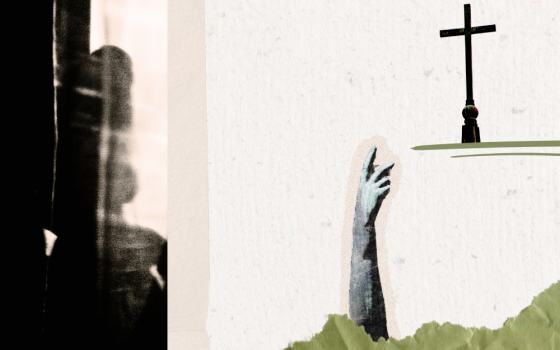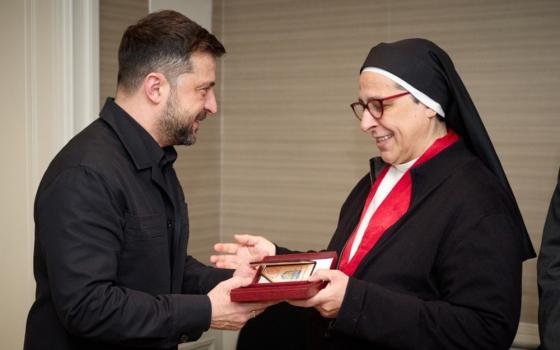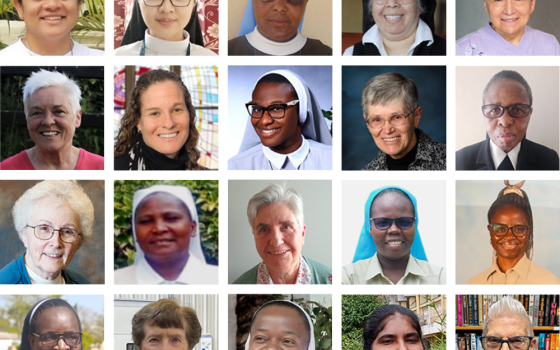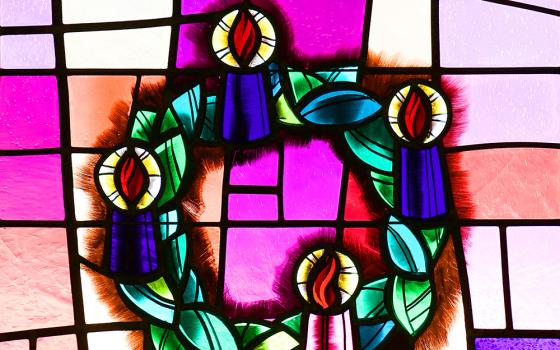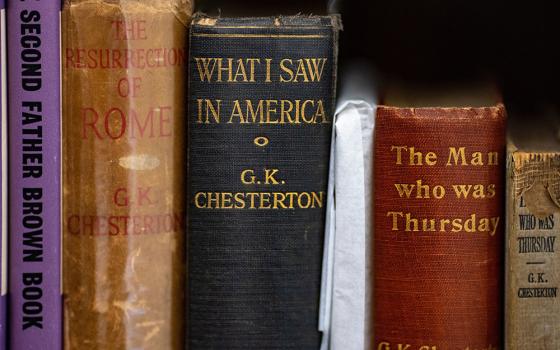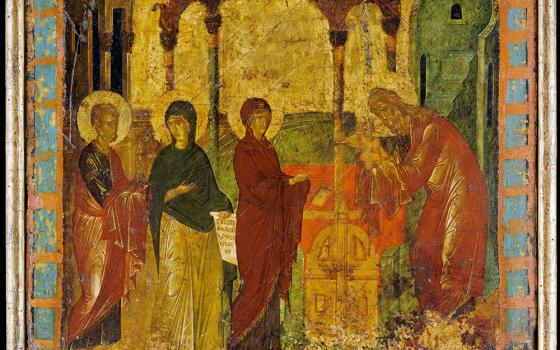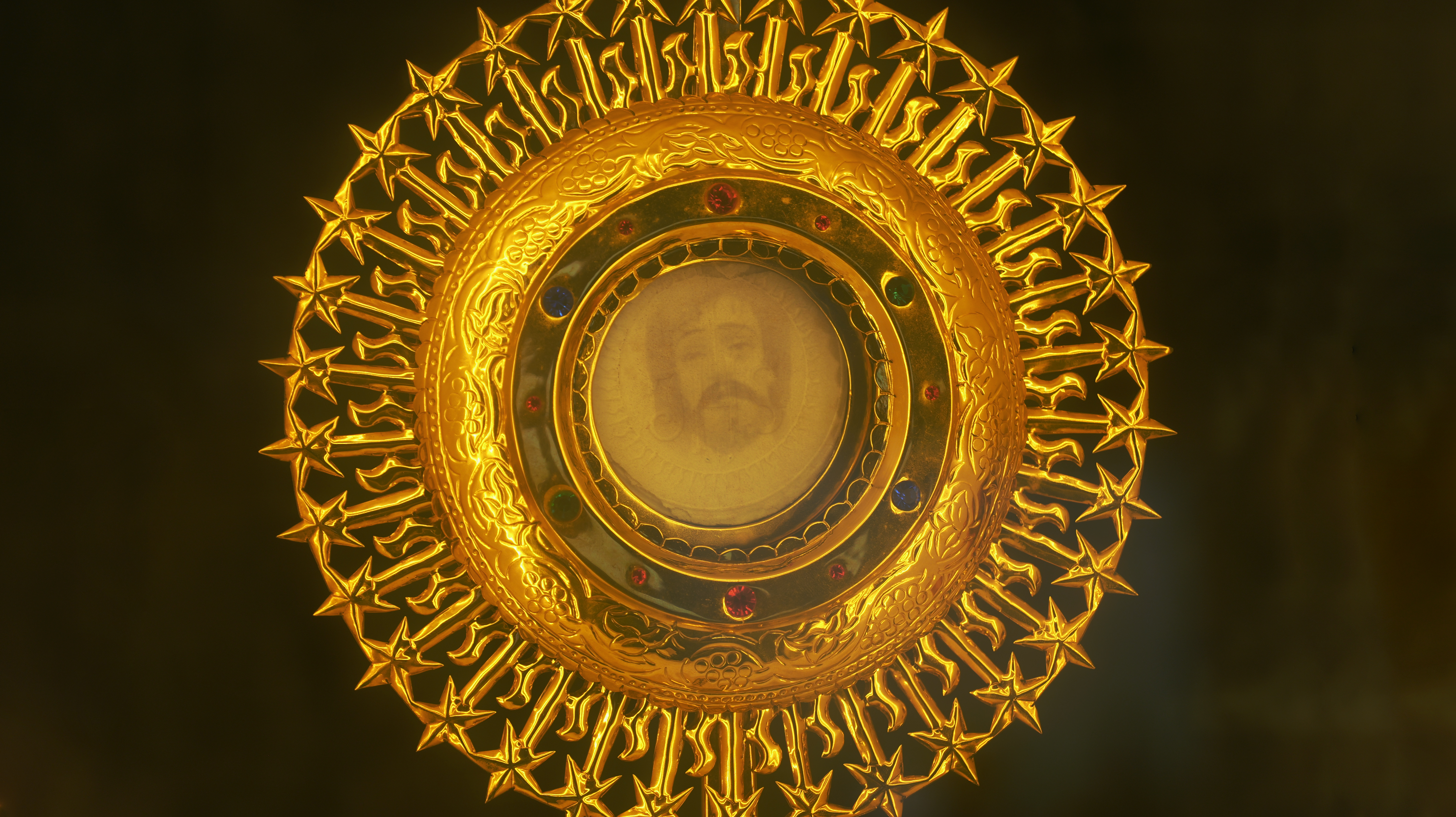
A picture of a face — believed to be Jesus — appeared on a eucharistic host in the village of Vilakkannur, India, in 2013. (Lismy Parayil)
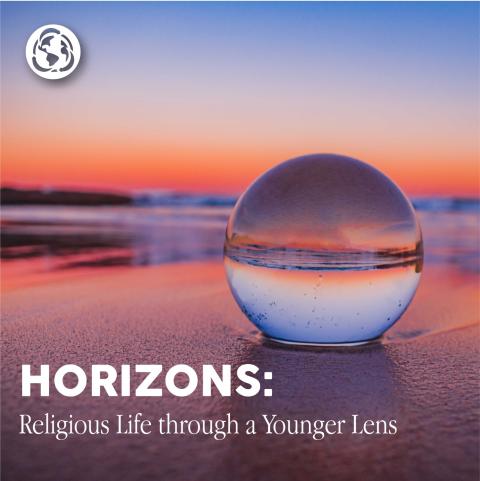
On Nov. 15, 2013, in Vilakkannur, a small village in the southern Indian state of Kerala, something extraordinary occurred during the celebration of the holy Eucharist. The presiding celebrant noticed a black dot on the consecrated host. Moments later, a human face appeared on the host.
Perplexed, the priest beckoned the sacristan, who also confirmed that the picture of a face — believed to be the face of Jesus — had formed on the host. The congregation, not realizing what was going on at the altar, assumed that the priest was experiencing some physical difficulty and the sacristan had been called for help.
After Mass, the priest revealed the phenomenon to the faithful, and the word spread like wildfire. Thousands gathered to witness what many called a miracle.
Because matters regarding faith require permission from the Holy See for public veneration, the host was removed from the local parish and safely kept elsewhere. It was later submitted for scientific investigation.
This year, the Vatican officially recognized it as a eucharistic miracle and granted permission for public veneration of the host.
The priest who witnessed the miraculous phenomena even asked, "Why me" and "Why Vilakkannur?" — a small hamlet in the diocese. Perhaps the only possible answer is that God's ways are beyond human understanding. And God, who chose to live among us in the humble form of bread and wine, does not require a grand place to reveal himself.
While a large number of the faithful considered it a miracle, others have argued that every Eucharist is a miracle. From a theological standpoint, they contend that the extraordinary appearance does not necessarily constitute a eucharistic miracle.
Yet, in the eyes of simple faithful, it is indeed a miracle: God chose to reveal himself to people in the consecrated bread.
The significance of the holy Eucharist is invaluable in Catholic life. The Eucharist is the greatest miracle on Earth, a living memorial of the Last Supper of Jesus. In every celebration, Jesus comes to us in the form of body and blood, offering life to all who receive him in faith.
Advertisement
But a deeper question remains: Do I see the face of Christ in the bread I receive? Do I truly experience the real presence of Jesus in every Eucharist I attend?
Apart from epistemological and theological arguments, the eucharistic miracle at Vilakkanur serves as more than a moment of wonder. It is a profound invitation. It calls each of us to recognize the face of Jesus not only on the altar but also in the people around us. Just as we gaze with reverence upon his face in the Eucharist, we are invited to look at others with the same eyes — eyes of love, mercy and compassion.
The miraculous image of Jesus on the host at Vilakkanur seems to whisper a gentle message to all the faithful: "See me in your brothers and sisters. Treat them as you would treat me."
When I was a little girl, my brother would pressure me to attend daily Mass. For a child, it was the hardest thing to do, although the church was less than 1 km away. Later in life, I realized that it was the finest contribution he made in my life. It was there that I developed a love for religious activities. And I feel grateful that the little struggle helped me grow to value the importance of the holy Eucharist.
Even though I attend Mass regularly — sometimes out of obligation — it's only recently I realized its significance. I have a friend who is much younger than I who speaks passionately about her experience of the eucharistic Lord. A woman of humble background and no formal theological training, she attributes every success in her life to her participation in the Eucharist.
One day, trying to adjust to her work hours, she set out to attend Mass but missed the bus. To her dismay, the next scheduled bus was canceled, and she was left with the option of either missing the Mass or reaching the church just for the final blessing. She didn't think twice, she ran to the church, which took nearly an hour.
To her astonishment, the entrance hymn had just begun. Truly, no one can completely comprehend the ways God loves us!
How true it is that God chooses to reveal himself to the innocent and childlike. The eucharistic miracle cannot be grasped by logic alone. It requires a heart of faith — an inner eye to see through and beyond.
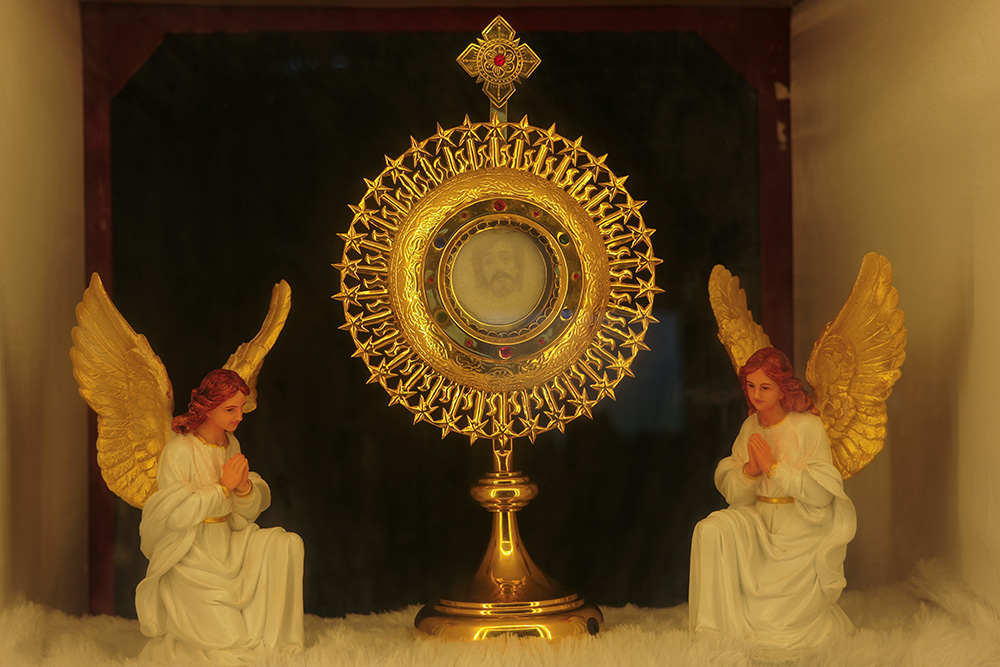
This year, the Vatican officially recognized the face on the host in Vilakkannour, India, as a eucharistic miracle and granted permission for its public veneration. (Lismy Parayil)
Every Eucharist gives us an upper room experience. We are invited to encounter that young man — Jesus — sharing his final message of love and breaking himself as the ultimate sign of that love. The Eucharist is our daily dose of energy, the answer to all our struggles.
One of my earliest memories about the importance of the Eucharist came from the sister who prepared us for our first Communion. She told us, "If you want to ask any favors from Jesus, the best time is after receiving holy Communion." Those words have remained in my memory, and have made an impact whenever I practiced them consciously.
The real presence of Jesus in the form of bread and wine — his body and blood — reminds me of the virtue of humility. Unlike the God of the Old Testament, who walked with the Israelites in the form of a cloud and a pillar of fire, Jesus chose to be present in the form of food. How great is our God, who can humble himself down to the level of human beings.
The Real Presence also challenges me: "Do I become a source of nourishment and strength for my brothers and sisters? Am I willing to be broken for others?"
Every time I receive the body and blood of Christ he whispers in my heart, "Do unto others as I have done to you." It is an invitation to give of myself, from my own sources and resources in pure love and generosity. To reach such humility, I still have much more to learn and grow!
The three Sundays following the feast of Pentecost are specially significant. Each one celebrates the divine love of Jesus in a special way. The feast of the precious body and blood of Christ reminds us that even after his ascension into heaven, he remains with us, tangibly and significantly.
We believe in a God who is living in us and with us. He is present in every Eucharist, in every tabernacle, and in every heart that receives him.

